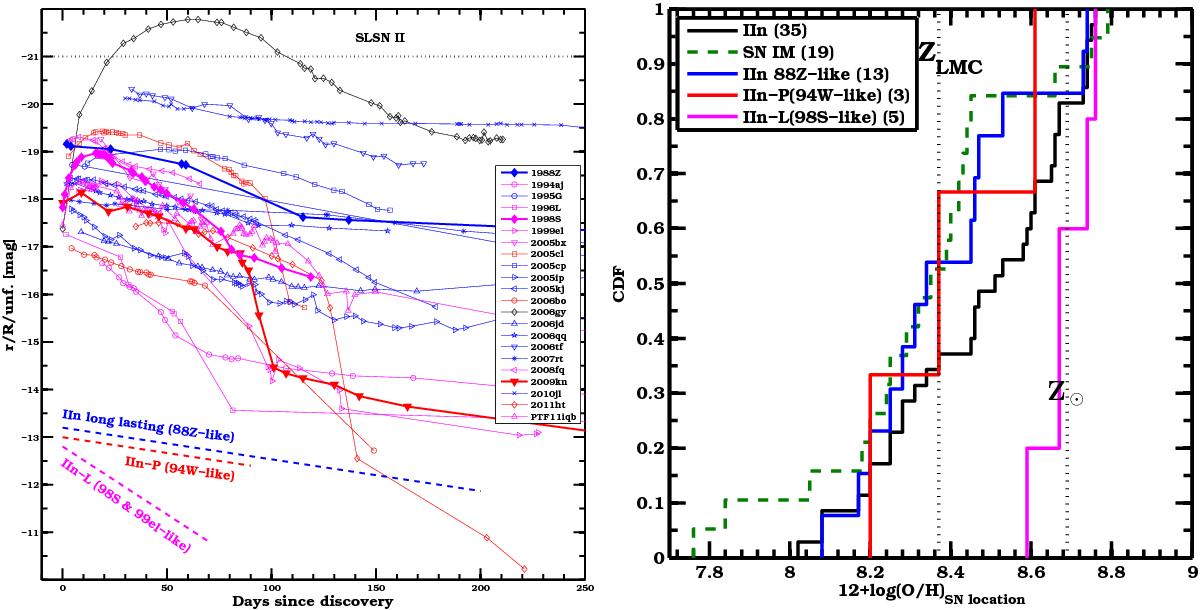Fig. 10

Left-hand panel: SN IIn light curves from the literature. Three main subclasses are identified (plus the SLSNe) based on the light curve shape. Long-lasting SNe IIn (1988Z-like; blue) show slow decline (~0.7 mag (100 days)-1) and sustained luminosity for ≳5 months. SN IIn-P (1994W-like; red) show a ~3–4 month plateau followed by a sharp drop, similar to what is observed in SNe IIP. SNe IIn-L (1998S or 1999el-like, depending on the spectral evolution; magenta) show a faster decline (~2.9 mag (100 days)-1). References for the light curve data and the extinction of SNe with measured metallicity can be found in Table 5. For SNe 1994aj, 1999el, 2005cl, 2006gy, 2006tf, and 2009kn, the references are Benetti et al. (1998), Di Carlo et al. (2002), Kiewe et al. (2012), Smith et al. (2007), Smith et al. (2008b), and Kankare et al. (2012), respectively. Right-hand panel: CDFs of the metallicity at the SN location for our CSI transients, including three SN IIn subclasses (1988Z-like, 1994W-like, 1998S-like). 1998S-like SNe are located at higher metallicity compared to the other subtypes.
Current usage metrics show cumulative count of Article Views (full-text article views including HTML views, PDF and ePub downloads, according to the available data) and Abstracts Views on Vision4Press platform.
Data correspond to usage on the plateform after 2015. The current usage metrics is available 48-96 hours after online publication and is updated daily on week days.
Initial download of the metrics may take a while.




